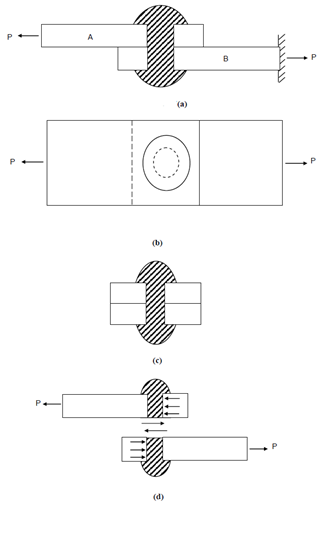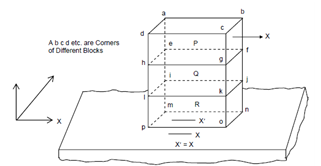Tensile Stresses:
You might observe in which the stress on x plane is normal (tensile), stress on y plane is inclined and in which on z plane is parallel to the plane itself. The stresses that are acting parallel to the plane on that they are applied are known as shear stresses. On additional consideration we might resolve the stress on the y plane into elements parallel and normal to the surface. Therefore, on any plane, there might be normal stresses, shear stresses or both. In additional, although the direction of normal to a plane is uniquely described, there are infinitely huge numbers of directions in that shear stresses may be applied on a plane.
Whatever might be the direction of shear stress, it can be additional resolved into components in two mutually perpendicular directions, and having completed this, you would have completely described the stresses acting on a plane. Defining like states of stress on all the planes will furnish the complete state of stress on the little element (or at a point).
Let us now consider a few examples of solids in that shear stresses are induced. Figure (a) display how two steel plates are linked together through a riveted joint. While the connected plates are pulled here the pull from plate A is transmitted to plate B by the rivet. The rivet might be considered to consist of two parts. Part C of the rivet carries the force P from plate A through diametric compression or bearing, although part D of the rivet transmits the load P to plate B through bearing. The transfer of force from part C to its counterpart D takes place at the general interface namely it's cross sectional fields at middle length. On this field, the force P is applied parallel and thus, the rivet is in shear.
Again let consider two wooden blocks linked together through some glue and also connected to a rigid base same, as shown in Figure (b). If a horizontal force P is applied on the x plane of the block A at the top, that force is transmitted to the base by a horizontal surface which is the common interface among the base and the block D. Since the force is parallel to the surface on that it is acting, it is shear force and the stress induced by it also should be shear stress. On additional scrutiny, you will search that the transmission of force from one block to another in the assembly is only as shear force and not only on interfaces among two adjacent blocks, but on some horizontal.

Figure (a)

Figure (b)